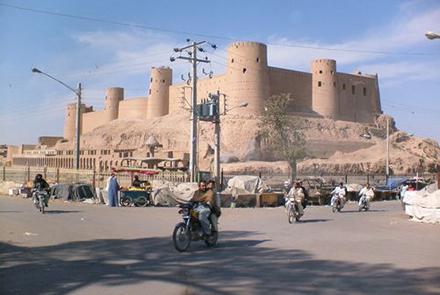Aria Raufian, the head of Herat’s Information and Culture Department, said recently the Afghan government is determined to save the country’s wealth of historical sites – many of which have been badly damaged in the ongoing war.
Speaking to China’s Xinhua news agency, Raufian said: “We have had some successes in protecting and maintaining historical and cultural sites in Herat."
"And besides the government's efforts, the Agha Khan foundation has also contributed to the protection of more than 52 sites in different parts of Herat, like the Old City and the Qala Ikhtiyar al-Din or castle of Ikhtiyar al-Din," he said.
"In addition, we have rebuilt some heritage sites such as the great Temple of Herat. In total about $3 million USD has been spent on historical and cultural sites' protection and fortification in recent years in Herat," Raufian added.
Raufian told Xinhua “more efforts are needed for the preservation of rich Afghan cultural sites. If more urgent measures are not put in place to preserve the historical monuments and cultural heritages, we could lose major parts of our heritage, particularly in restive and insecure areas in the countryside."
He also called for more protection of archeological sites in the countryside.
Raufian made the comments to mark International Day for Monuments and Sites which was celebrated around the world on Wednesday.
The aim of the International Day for Monuments and Sites is to encourage local communities and individuals throughout the world to consider the importance of cultural heritage to their lives, identities and communities, and to promote awareness of its diversity and vulnerability and the efforts required to protect and conserve it.
Herat city has long been of cultural significance to the wider region. Although the city has developed extensively in modern times, and has suffered the ravages of conflict, the site is unique in that it has largely retained its historical footprint, and many significant Islamic monuments have survived.
According to UNESCO, Herat city is thought to have been established around 500 BC as the ancient Persian town of Artacoana or Aria.
Captured by Alexander the Great in 330 BC during his war against the Achaemenids, the town was developed and a citadel built. After destruction at the hands of both the Mongols and Genghis Khan, Herat saw something of a renaissance in the late 14th and 15th century AD.
One of the oldest extant structures in the historic core of Herat is Qala Ikhtyaruddin, built on the site of the ancient citadel.
The layout of battlements and towers that survive is thought to date from the early 14th century AD, when the Karts re-built a fortress that had been destroyed by the Mongols.
Perhaps the largest historic architectural ensemble that survives in the region today is the Musalla complex, built in the early 15th century under the direction of Queen Gawharshad. The complex, which has been described as “the most beautiful example in color in architecture ever devised by man to the glory of his God and himself” today comprises a mosque, the mausoleum of Gawharshad, five minarets and the remains of the madrasa of Hussein Baiqara.
Although damaged during the war in the early 1990s, the mausoleum of Gawharshad retains its ribbed tiled dome, which is set above a high drum covered in tiled decoration, both with Koranic inscriptions and abstract patterns.
Another important part of the surviving architectural heritage in Herat is the mausoleum complex of Khwaja Abdulla Ansari in Gozargah, which dates from the Timurid period.


